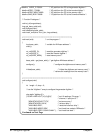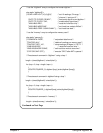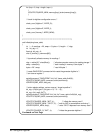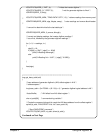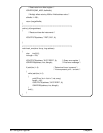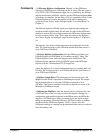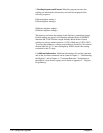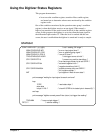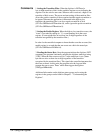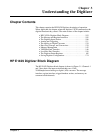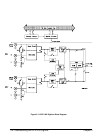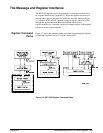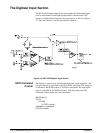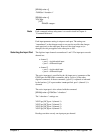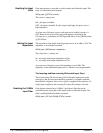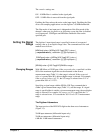
Comments 1. Setting the Transition Filter. When the digitizer is INITiated, a
low-to-high transition of bit 6 in the condition register occurs indicating the
digitizer is in the wait-for-arm state. When an arm is received, a high-to-low
transition of bit 6 occurs. The power-on/reset setting of the transition filter
allows the positive transition to be recognized and the negative transition to
be ignored. Because the application is interested in the high-to-low
transition, the transition filter is set for a negative transition of bit 6
(STATus:OPERation:NTRansition 64), and to ignore the positive transition
(STATus:OPERation:PTRansition 0).
2. Setting the Enable Register. When the high-to-low transition occurs, the
"event" is recorded by setting (to ’1’) a corresponding bit in the event
register. (Event register bits are set from low-to-high regardless of the
transition recognized by the transition filter.)
In order for the controller/computer to know that the event has occurred, the
enable register is set such that the arm event sets a bit in the status byte
(STATus:OPERation:ENABle 64).
3. Reading the Status Byte. Once the program initiates the digitizer (INIT
command), the program continually monitors the digitizer status byte using
*STB?. When the arm event occurs, bit 7 in the status byte is set. (Status
byte bits are also set from low-to-high regardless of the transition
recognized by the transition filter.) This signals the controller/computer that
the event occurred. At this point, the program exits the loop and then
prompts the user to press ’Enter’ which then triggers the digitizer
(TRIGger:IMMediate).
Additional information on the digitizer status groups and on using the
registers in the groups can be found in Chapter 3 - "Understanding the
Digitizer".
102 Usin
g
the Di
g
itizer Chapter 2



